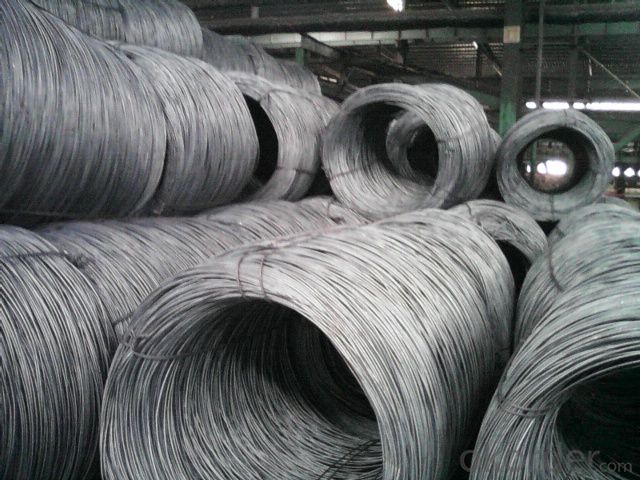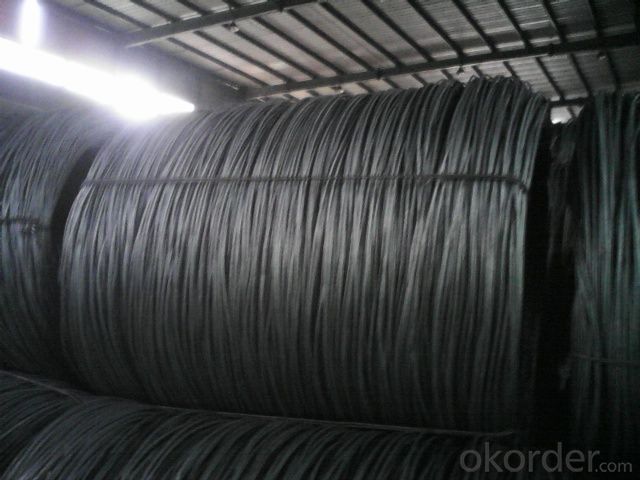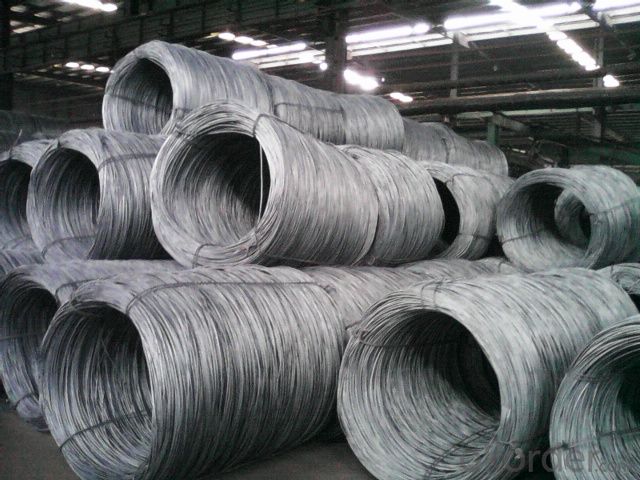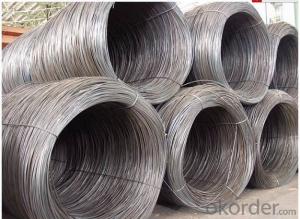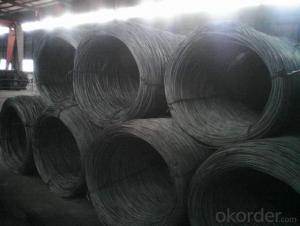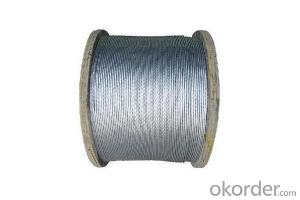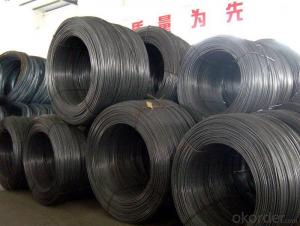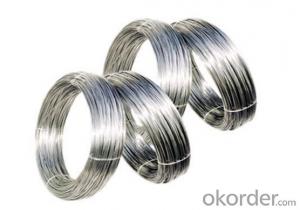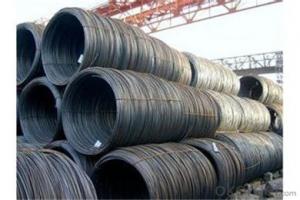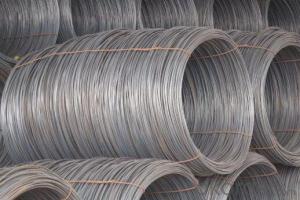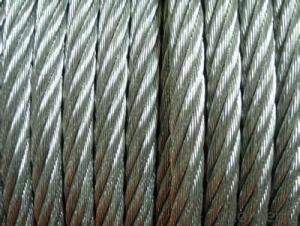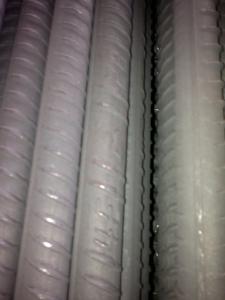5.5mm SAE1008 Low Carbon Steel Wire Rods in Coils
- Loading Port:
- Tianjin
- Payment Terms:
- TT or LC
- Min Order Qty:
- 100 m.t.
- Supply Capability:
- 40000 m.t./month
OKorder Service Pledge
OKorder Financial Service
You Might Also Like
OKorder is offering 5.5mm SAE1008 Low Carbon Steel Wire Rods in Coils at great prices with worldwide shipping. Our supplier is a world-class manufacturer of steel, with our products utilized the world over. OKorder annually supplies products to African, South American and Asian markets. We provide quotations within 24 hours of receiving an inquiry and guarantee competitive prices.
Product Applications:
5.5mm SAE1008 Low Carbon Steel Wire Rods in Coils are ideal for structural applications and are widely used for reinforcement of reinforced concrete and welded structure or reprocessed (roberts , nail, etc.) materials, especially used to produce wire drawing, welding electrode, nails, spring, electronic, precise machinery parts and so on..
Product Advantages:
OKorder's 5.5mm SAE1008 Low Carbon Steel Wire Rods in Coils are durable, strong, and wide variety of sizes.
Main Product Features:
· Premium quality
· Prompt delivery & seaworthy packing (30 days after receiving deposit)
· Can be recycled and reused
· Mill test certification
· Professional Service
· Competitive pricing
Product Specifications:
Manufacture: Hot rolled
Grade: SAE1008
Certificates: ISO, SGS, BV, CIQ
Packed: prproduct packed in coils, usually shipped by bulk vessel
Coil weight: about 2mts/ coil
Grade | Chemical Composition(%) | |||||
C | Mn | Si | S | P | B | |
SAE1008B | 0.10max | 0.3~O.50 | 0.15max | 0.050max | 0.040 max | 0.0008 min |
Mechanical properties | ||||||
Yield strength(N/mm2) | Tensile strength(N/mm2) | Elongation(%) | ||||
≥195 | 315-430 | ≥30 | ||||
Grade | Chemical Composition(%) | |||||
C | Mn | Si | S | P | B | |
Q195B | 0.06~O.12 | 0.25~O.50 | ≤0.30 | ≤0.050 | ≤0.045 | >0.0008 |
Mechanical properties | ||||||
Yield strength(N/mm2) | Tensile strength(N/mm2) | Elongation(%) | ||||
≥195 | 315-430 | ≥33 | ||||
FAQ:
Q1: Why buy Materials & Equipment from OKorder.com?
A1: All products offered byOKorder.com are carefully selected from China's most reliable manufacturing enterprises. Through its ISO certifications, OKorder.com adheres to the highest standards and a commitment to supply chain safety and customer satisfaction.
Q2: How do we guarantee the quality of our products?
A2: We have established an advanced quality management system which conducts strict quality tests at every step, from raw materials to the final product. At the same time, we provide extensive follow-up service assurances as required.
Q3: How soon can we receive the product after purchase?
A3: Within three days of placing an order, we will arrange production. The normal sizes with the normal grade can be produced within one month. The specific shipping date is dependent upon international and government factors, the delivery to international main port about 45-60days.
Q4: How many tons of steel products could be loaded in containers?
A4: Usually the steel products are delivered by bulk vessel because of the large quantity and the freight. However, there are no bulk vessel enter some seaports so that we have to deliver the cargo by containers. The 6m steel product can be loaded in 20FT container, but the quantity is changed according to the size, usually from 18tons to 25tons.
Images:
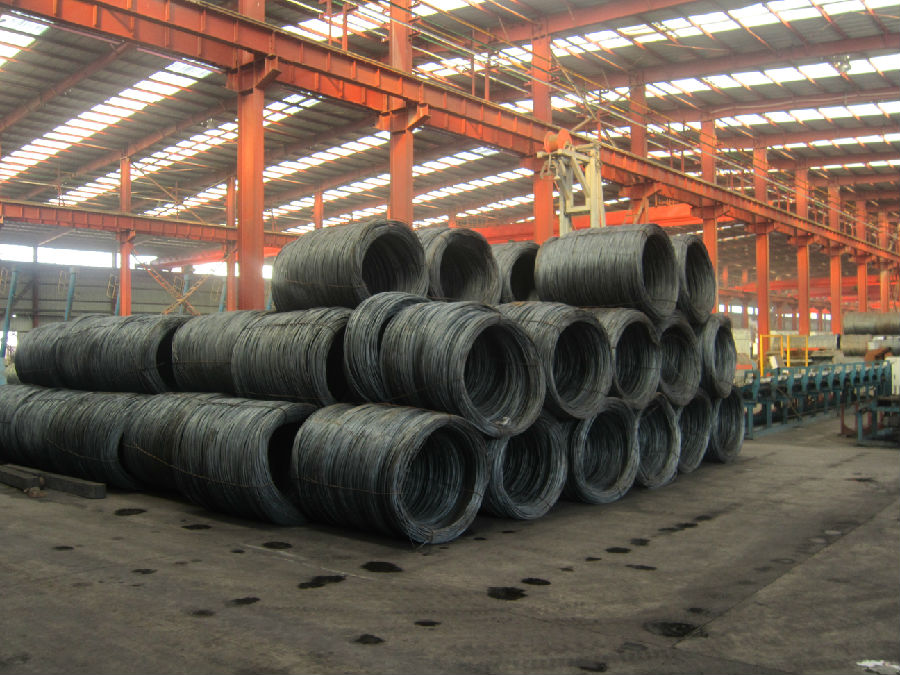
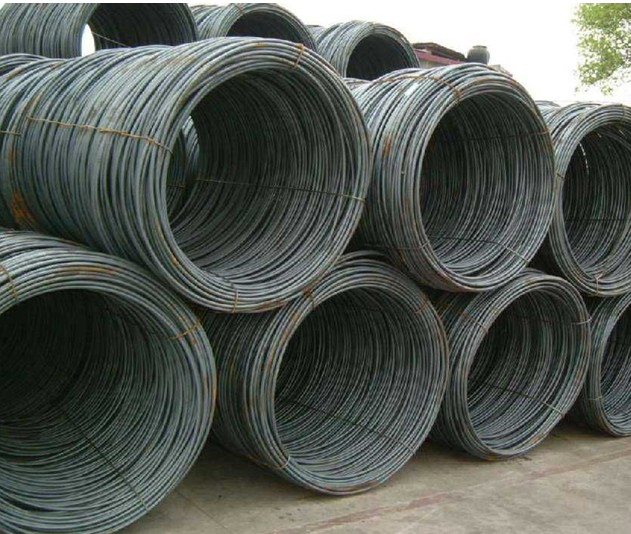
- Q: What are the common production processes for francium-coated steel wire rod?
- The common production processes for francium-coated steel wire rod typically involve hot rolling the steel wire rod to the desired diameter, followed by cleaning and preparation of the surface. The wire rod is then coated with a layer of francium using various methods such as electroplating or vapor deposition. After the coating process, the wire rod undergoes further heat treatment and cooling to ensure proper adhesion and durability of the francium coating. Finally, the finished francium-coated steel wire rod is inspected and packaged for distribution.
- Q: How are steel wire rods used in the manufacturing of wire ropes?
- Wire ropes are manufactured using steel wire rods, which are an essential component in the process. These rods serve as the raw material from which individual wires are produced and then twisted together to form the rope. To begin the manufacturing process, the steel wire rods are drawn through a series of dies. This draws out the rods, reducing their diameter and increasing their length. This step, called wire drawing, results in wires of different sizes and strengths. Once the desired wires are obtained, they are twisted together in a specific pattern to create strands. These strands are typically helically twisted around a core, which can be another wire or a fiber material. The number of strands and the direction of the twist are determined by the intended use and load requirements of the wire rope. The selection of steel wire rods is crucial for their high tensile strength, durability, and resistance to corrosion. Steel is known for its excellent strength-to-weight ratio, making it ideal for applications that require reliable and robust wire ropes. Furthermore, the quality of the steel wire rods is vital for the performance and longevity of the wire rope. The steel must meet strict specifications to ensure it can withstand heavy loads, extreme weather conditions, and repetitive stress without compromising the integrity of the wire rope. In conclusion, the manufacturing process of wire ropes involves transforming steel wire rods into wires through wire drawing. These wire ropes are widely used in industries such as construction, mining, maritime, and transportation, where they are valued for their strength, durability, and ability to withstand demanding conditions.
- Q: What are the main factors affecting the recyclability of steel wire rod?
- The main factors affecting the recyclability of steel wire rod are the presence of impurities or contaminants, such as coatings or alloys, the condition of the wire rod (e.g. corrosion or damage), and the separation efficiency during the recycling process. Additionally, market demand and economic factors play a role in determining the viability and cost-effectiveness of recycling steel wire rod.
- Q: How is the quality of steel wire rod measured?
- The quality of steel wire rod is measured through a series of tests and evaluations to assess its mechanical properties, chemical composition, and overall performance. The key parameters used to determine the quality of steel wire rod include: 1. Tensile Strength: This test measures the maximum amount of stress a wire rod can withstand before breaking or experiencing deformation. It indicates the rod's ability to bear weight and resist tension. 2. Yield Strength: This test determines the level of stress at which the wire rod begins to deform permanently. It indicates the rod's ability to return to its original shape after being subjected to stress. 3. Elongation: This test measures the percentage increase in length of the wire rod before it breaks under tension. It provides insights into the rod's ductility and ability to elongate without losing its integrity. 4. Hardness: This test determines the resistance of the wire rod to indentation or scratching. It provides an indication of the rod's strength and durability. 5. Chemical Composition: The composition of the steel wire rod is analyzed to ensure it meets the required standards and specifications. It includes evaluating the levels of carbon, manganese, silicon, sulfur, phosphorus, and other alloying elements. 6. Surface Quality: The wire rod's surface is inspected visually and sometimes through microscopic analysis to detect any defects, such as cracks, scratches, or impurities. A smooth and clean surface is crucial for optimal performance. 7. Dimensional Accuracy: The wire rod's diameter and length are measured to ensure they meet the specified tolerances. Any deviations from the required dimensions can affect the rod's usability in various applications. 8. Microstructure Analysis: This examination involves detailed observation of the wire rod's internal structure using microscopy. It helps identify the presence of any abnormalities, such as grain size, inclusions, or segregation, that may impact its strength and performance. By conducting these tests and evaluations, manufacturers can ensure that the steel wire rod meets the required quality standards and is suitable for its intended applications, such as manufacturing wire products, reinforcing materials, or springs.
- Q: What is steel wire rod?
- Steel wire rod is a semi-finished metal product that is primarily used as a raw material for the production of various steel wire products. It is a long, cylindrical metal bar made from molten steel that has been cast into a shape suitable for further processing. Steel wire rod is commonly used in industries such as construction, automotive, and manufacturing, where it is drawn or rolled into different diameters to create wires for applications like reinforcement, cables, springs, and fences.
- Q: How is the surface hardness of steel wire rod measured?
- The surface hardness of steel wire rod is typically measured using a testing method called the Rockwell hardness test. This test involves pressing a diamond or steel ball indenter into the surface of the wire rod and measuring the depth of penetration. The hardness value is then determined based on the depth of penetration and the applied load.
- Q: What are the different types of wire ropes made from steel wire rod?
- There are several different types of wire ropes made from steel wire rod, each designed to serve different purposes and applications. Some of the most common types include: 1. Galvanized Wire Ropes: These wire ropes are coated with a layer of zinc through a process called galvanization. This coating provides corrosion resistance, making them suitable for outdoor and marine environments. 2. Stainless Steel Wire Ropes: Made from high-quality stainless steel, these wire ropes offer excellent corrosion resistance, even in harsh conditions. They are commonly used in marine, food processing, and pharmaceutical industries. 3. Bright Wire Ropes: Also known as ungalvanized wire ropes, these ropes are made from plain steel wire rods without any protective coating. They are typically used in static applications where corrosion resistance is not a concern. 4. Plastic Coated Wire Ropes: These wire ropes have a layer of plastic coating applied over the steel core. The plastic coating provides additional protection against corrosion and abrasion, making them suitable for applications such as gym equipment and hoisting cables. 5. Compacted Wire Ropes: These wire ropes are manufactured using a compacting process that reduces the gaps between individual strands, increasing their strength and durability. They are commonly used in heavy lifting operations and crane applications. 6. Rotation Resistant Wire Ropes: Designed to minimize twisting and rotation under load, these wire ropes are constructed with special strands and core configurations. They are ideal for applications that require precise control and stability, such as suspension bridges and tower cranes. 7. Wire Ropes with Fiber Core: These wire ropes have a core made of natural or synthetic fibers, such as sisal or polypropylene. The fiber core provides flexibility and cushioning, making them suitable for applications that require shock absorption, such as elevators and ski lifts. Each type of wire rope has its own unique properties and advantages, and selecting the appropriate type depends on factors such as the environment, load requirements, and intended application.
- Q: What are the common applications of galvanized steel wire rod?
- Galvanized steel wire rod has a wide range of applications across various industries due to its unique properties and benefits. Here are some common applications of galvanized steel wire rod: 1. Construction: Galvanized steel wire rods are extensively used in the construction industry. They are used for reinforcing concrete structures like beams, columns, and foundations. The galvanized coating provides corrosion resistance, making it suitable for outdoor applications where exposure to moisture and harsh weather conditions is common. 2. Fencing and Barriers: Galvanized steel wire rod is commonly used for manufacturing fences, wire mesh, and barriers. The galvanized coating enhances the wire's durability and makes it rust-resistant, ensuring a longer lifespan even in outdoor environments. 3. Automotive Industry: Galvanized steel wire rods are used in the automotive industry for various applications. They are used in the manufacturing of automotive parts like springs, suspension systems, and brake cables. The galvanized coating provides protection against corrosion, ensuring the longevity and reliability of these components. 4. Agriculture: Galvanized steel wire rods find extensive use in the agricultural sector. They are used for making wire fences, trellises, and supports for plants and crops. The galvanized coating protects the wire from rusting, ensuring its durability in agricultural environments that are often exposed to moisture and chemicals. 5. Electrical Wiring: Galvanized steel wire rods are also used in electrical applications. They are used for manufacturing electrical wires, cables, and conductors. The galvanized coating provides an added layer of protection against corrosion, ensuring the safety and longevity of electrical installations. 6. Packaging and Binding: Galvanized steel wire rods find applications in the packaging and binding industry. They are used for making wire ties, baling wire, and packaging materials. The galvanized coating provides strength and durability, making it ideal for securing and bundling different materials. These are just a few common applications of galvanized steel wire rod. Its versatility, strength, and corrosion resistance make it a valuable material across numerous industries and sectors.
- Q: What are the different hardness testing methods for steel wire rod?
- There are several hardness testing methods for steel wire rods, including the Rockwell hardness test, Brinell hardness test, Vickers hardness test, and Knoop hardness test. Each method involves applying a specific amount of force or pressure to the surface of the wire rod and measuring the depth or size of the indentation left by the indenter. These tests help determine the hardness and strength of the steel wire rod, providing valuable information for quality control and material selection purposes.
- Q: What are the different types of steel wire rod annealing atmospheres?
- The different types of steel wire rod annealing atmospheres include hydrogen, nitrogen, and endothermic gas.
Send your message to us
5.5mm SAE1008 Low Carbon Steel Wire Rods in Coils
- Loading Port:
- Tianjin
- Payment Terms:
- TT or LC
- Min Order Qty:
- 100 m.t.
- Supply Capability:
- 40000 m.t./month
OKorder Service Pledge
OKorder Financial Service
Similar products
Hot products
Hot Searches
Related keywords



